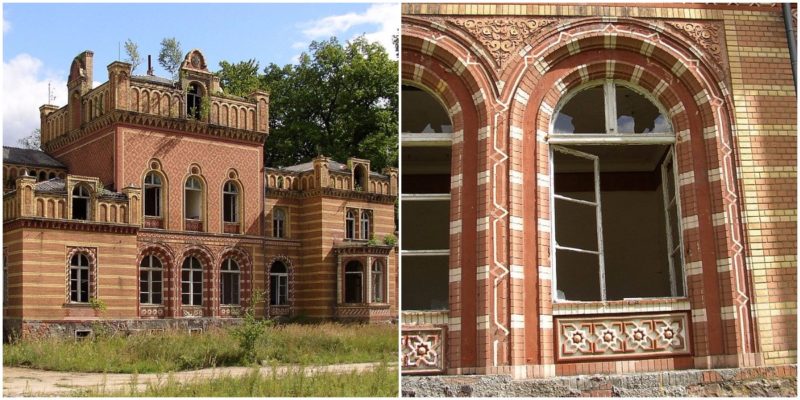The Gentzrode mansion is located in the municipality of Neuruppin, Germany, just outside of the city limits. The town of Neuruppin is also known as Fontanestadt in honor of the great poet Theodor Fontane who was born there. It is also said about this city that is the “most Prussian of all Prussian cities”.
Johann Christian Gentz: man with an idea
Back in 1840 a textile manufacturer and wealthy merchant bought the estate known as Kahlen Berge (Bald Mountain), a tract of land north of the town of Neuruppin.
The name of the clothier was Johann Christian Gentz, and he had plans to become prosperous in yet another industry. He wanted to farm the lands and create a successful plantation. For this purposes a large ornate granary was designed and constructed by Carl von Diebitch in 1861.
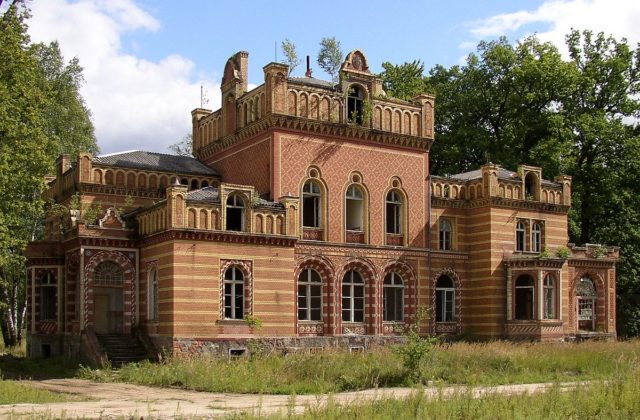
Carl von Diebitch spent several years in the Mediterranean studying different styles of architecture. But most of time he spent in Andalusia, Spain, especially in Granada where he studied the Alhambra, and in Cordoba where he was studying the Mezquita, the two biggest monuments of Moorish architecture ever built.
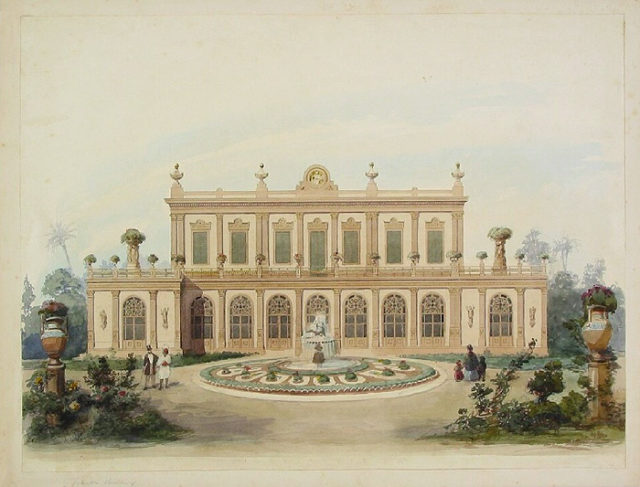
Even in the beginnings of the development of what would be the great Gentzrode mansion we can spot the megalomania in the mind of it’s owner. The granary had not only to be large, but also intricate and complex in style. But I guess you can say he was wealthy and had the money to build his dream barn.
With help from his son Ludwig Alexander Gentz, he worked the farm for about fifteen years before deciding it was time to built a bigger, more comfortable home for himself and his family. He envisioned a grand castle-like mansion, surrounded with landscaped gardens and a family mausoleum. Inspired by the Moorish looking barn that Carl von Diebitch designed for him in 1861. He wanted to keep the same style, only this time on a much larger scale.
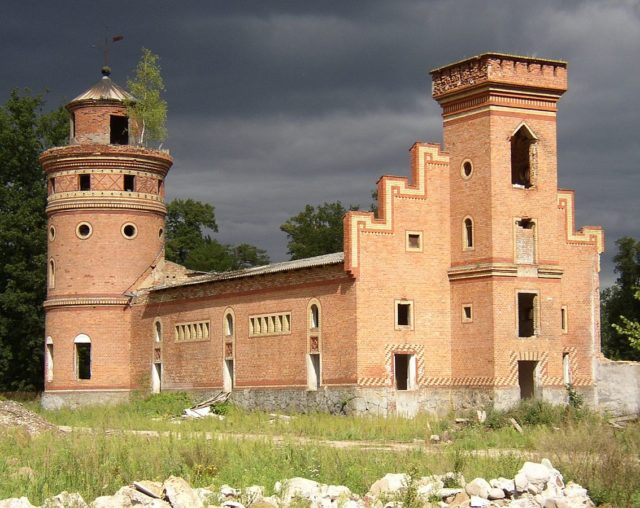
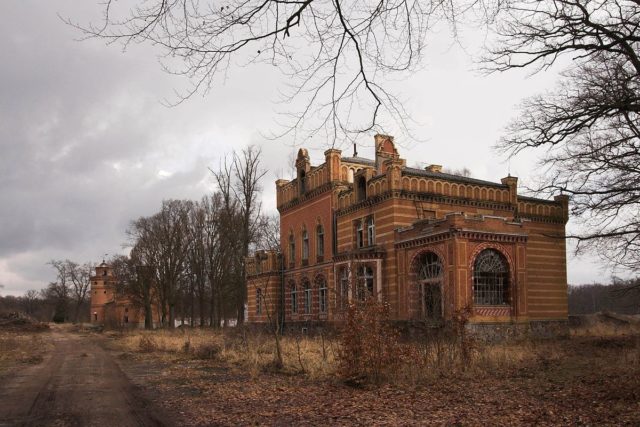
The bankruptcy of Gentz family
The mansion was designed by Martin Gropius and Heino Schmieden and was built between 1876-1877. The romantic gardens around it were planned by Gustav Meyer. Unfortunately the cost of the lavish construction exceeded way beyond the estimated budget. This led to the ruination of Johann Christian Gentz’s family and his business: the Gentz estate was declared bankrupt in 1880.
After 1880 the beautiful Gentzrode mansion was bought and sold often. In 1881 it was sold for one fifth of the construction costs. The new owners sold off all the inventory before eventually selling the whole estate in only ten months time.
The next owner was a machine manufacturer who specialized in sugar production. He wanted to revive the plantation and grow sugar beet on the grounds. But his idea quickly fell to pieces due to the poor soil quality for this agricultural endeavor. After five years the estate was sold again, this time to Paul Hoepffner. He only owned it for half a year.
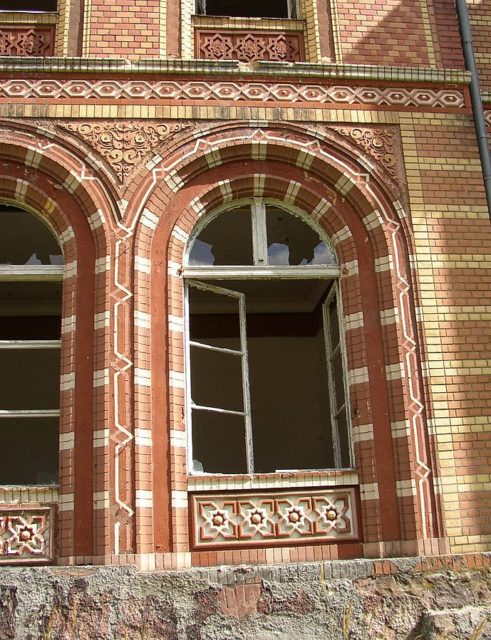
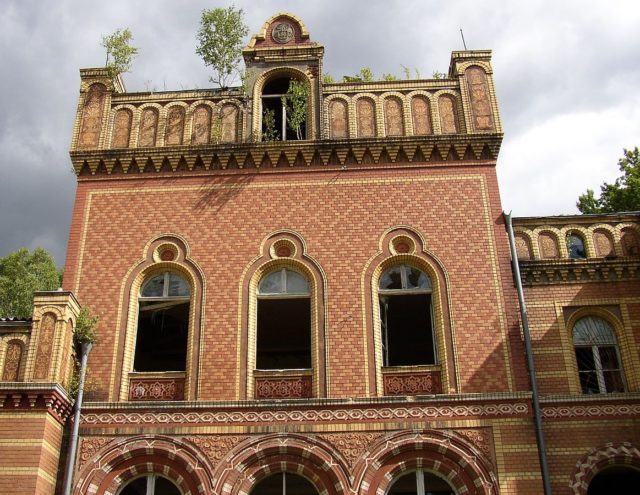
Army house
In 1934 the area was possessed by the Nazi Wehrmacht. The German army used it as a firing range and ammunition dump. After 1945 the Soviet army took control of the estate and it became home to the Group of Soviet Forces in Germany tank division. The Soviets were the first owners to add something significant to the estate. They built a cinema, two barracks, a boiler house, sauna, and a grocery store that could support 5,000 people living at the site. After the release of the of the Russian army from the estate, the building and the 500 acre farm fell into ruin.
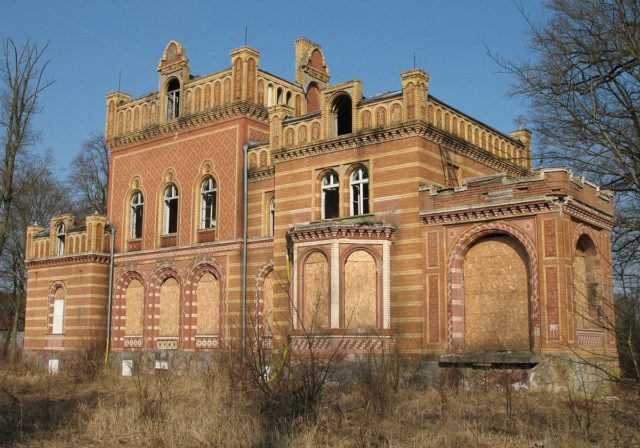
Last known plans for the estate come from 2010 when a Turkish investor purchased Gentzrode with hopes to restore it and transform it into a vacation resort. Since 2011 the process of restoration has been halted while the area is being searched for any live ammunition or land mines that might still be ticking under the ground.
